Class 6 Civics Chapter 1 Notes - Diversity
| Table of contents |

|
| What is Diversity? |

|
| Diversity in India |

|
| Unity in Diversity |

|
| Frequently Asked Questions |

|
What is Diversity?
Diversity is defined as the condition of having many different elements together in a classroom, organization, institution, country, world etc.
- If three children of the same age are asked to draw human figures, every drawing will be different from each other. This is because everyone has a unique drawing style.
 Diversity in People
Diversity in People
- Children not only do not look exactly like each other but also differ in terms of the language they speak, their cultural backgrounds, the religious rituals they observe, and, of course, the way they draw!
- In the same way, if they are asked to fill in details about themselves, the answers would vary for each child. This helps students to recognize what they have in common with their classmates or how different they are from each other.
Making Friends
How easy is it to make friends with someone who is very different?
- Given in the textbook is the example of two friends, who despite speaking different languages still communicated with each other, as it was important for them.
- They belonged to different religious and cultural backgrounds as well, emphasizing the aspect of diversity.
- Apart from these differences, it can be seen that while one attended school, the other had to sell newspapers.
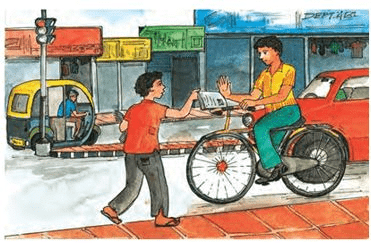
Can Friends be from Different class or background?
(i) Nothing stops people from different backgrounds from becoming friends.
(ii) Right to Education (RTE) has made provision for poor family children to study in public schools. This reduces diversity.
Example of Sameer Ek and Sameer Do:
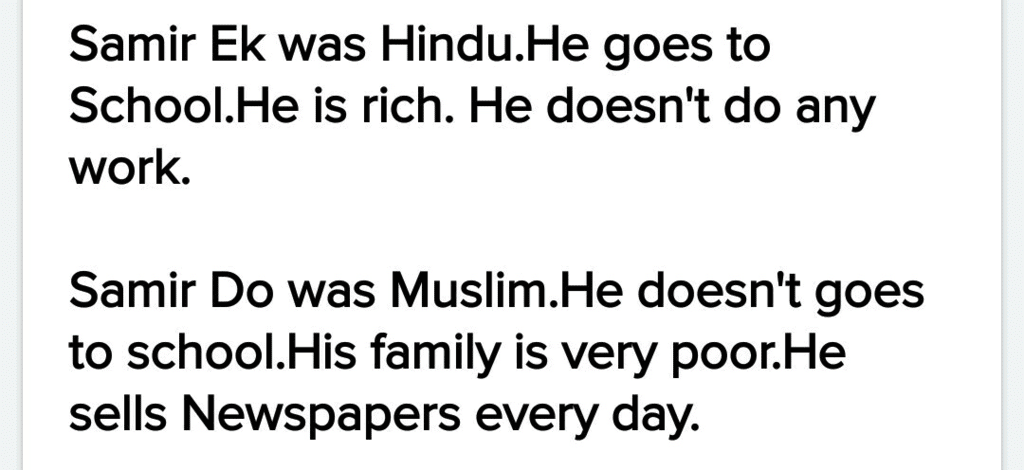
What does Diversity add to our Lives?
One thing that is unique about diversity is that it teaches us to live and adjust ourselves in a broad society.
- Imagine a world, where everything was the same.
- Other than the same two colors red and white, the same food (maybe potatoes!), the same two animals, for example, the deer and the cat, and snakes and ladders, the same game, there was nothing different.
- There would be no diversity and it would be dull.
- Even the story writers will not have anything to write about, as most depend on ideas drawn from their experiences and real-life encounters to make stories more interesting and fun.
Diversity in India
India is the land of many diversities include different languages, various types of food, different festivals, different religions, and so on. At the same time, there are also many things that are similar.
How do we Explain Diversity?
Various cultural influences help to shape life and culture in some regions that become very diverse because of their unique histories.
- Sometime before 200 years ago, before the age of trains, aeroplanes, and bus or car, people used to travel by ships, on horses, on camels or on foot. They travelled in search of new places to settle in or people to trade with. At times, they stayed back at a place for a long time. Some others left their homes because of the scarcity of food caused by droughts and famine. Some made their home at the new places and gave rise to a mix of the old and new in their food, language, music, religion, and so forth.
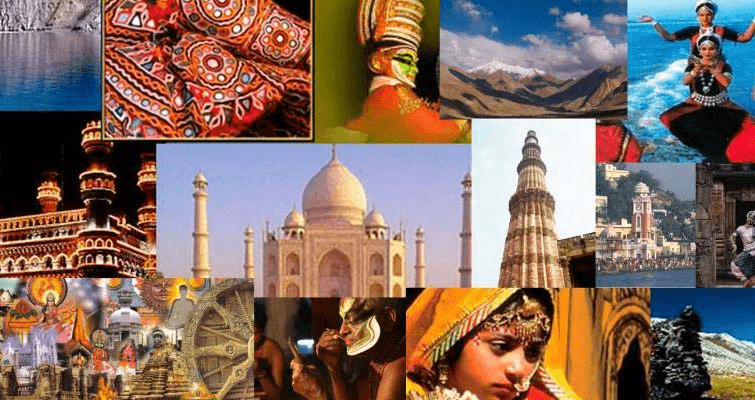 Indian Culture is DIverse yet Unique
Indian Culture is DIverse yet Unique - Various cultural influences help to shape life and culture in some regions that become very diverse because of their unique histories. In a similar way, diversity also comes about when people adapt their lives to the geographical area in which they live. For example, living near the sea is quite different from living in a mountainous area. The eating habits and clothing of people differ in each of these regions. The kind of work they do is also different.
- For example, Ladakh is a desert in the mountains in the eastern part of Jammu and Kashmir, where very little agriculture is possible as this region does not receive any rain and is covered in snow for a large part of the year. For drinking water, people depend on the melting snow during the summer months. People here keep sheep and goats. Goats produce pashmina wool, which is prized and the shawls made of this wool fetch a lot of money. People eat meat and milk products like cheese and butter. Each family owned some goats, cows, and dzos (yak-cows).
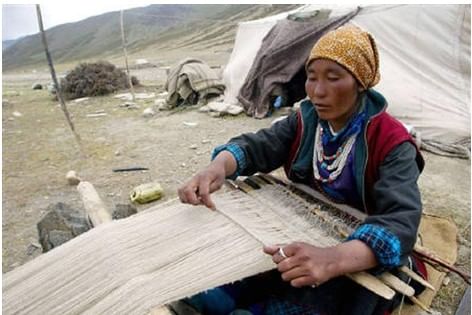 Woman weaving a Pashmina ShawlMeanwhile, the place also attracted traders despite being a desert. It was considered a good trade route as it had many passes through which caravans traveled to today’s Tibet. These caravans carried textiles and spices, raw silk, and carpets. Buddhism came to Tibet via Ladakh (also called Little Tibet). Islam was introduced in this region over 400 years ago and it has a significant Muslim population. Ladakh has a very rich oral tradition of songs and poems. Local versions of the Tibetan national epic the Kesar Saga are performed and sung by both Muslims and Buddhists.
Woman weaving a Pashmina ShawlMeanwhile, the place also attracted traders despite being a desert. It was considered a good trade route as it had many passes through which caravans traveled to today’s Tibet. These caravans carried textiles and spices, raw silk, and carpets. Buddhism came to Tibet via Ladakh (also called Little Tibet). Islam was introduced in this region over 400 years ago and it has a significant Muslim population. Ladakh has a very rich oral tradition of songs and poems. Local versions of the Tibetan national epic the Kesar Saga are performed and sung by both Muslims and Buddhists. - Kerala is a state in the southwest corner of India surrounded by the sea on one side and hills on the other. A number of spices like pepper, cloves, and cardamoms are grown on the hills, making this region an attractive place for traders (Jewish and Arab traders being the first to arrive).
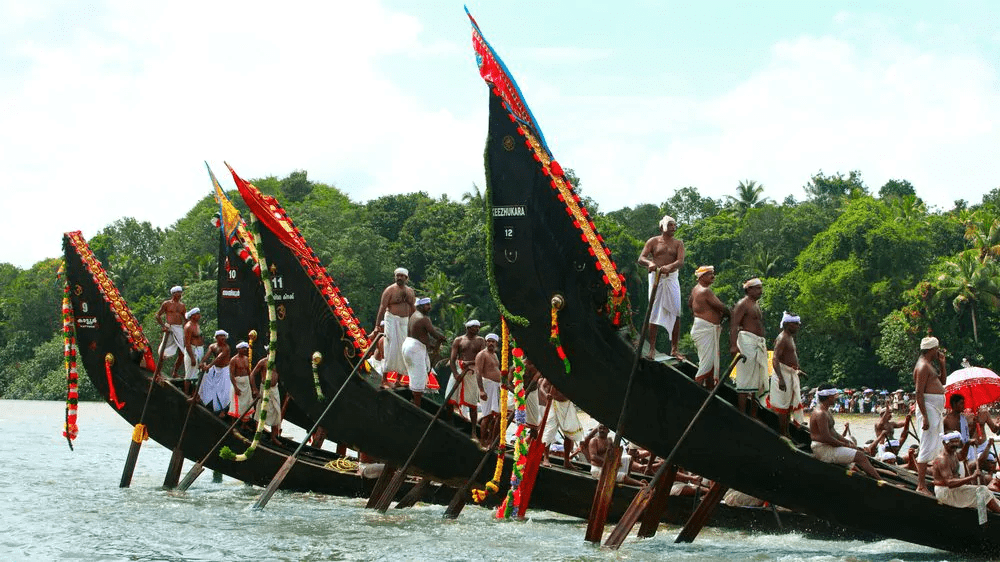 The boat race is an important part of the Onam festival celebrated in KeralaThe Apostle of Christ, St. Thomas came here nearly 2000 years ago and is credited with bringing Christianity to India. Many Arab traders also came and settled down here. Ibn Battuta, who traveled here a little less than 700 years ago, wrote a travelogue describing the lives of Muslims and said that they were a highly respected community. Portuguese discovered the sea route to India from Europe when Vasco da Gama landed with his ship. All these various historical influences resulted in the people of Kerala practicing different religions such as Judaism, Islam, Christianity, Hinduism, and Buddhism.
The boat race is an important part of the Onam festival celebrated in KeralaThe Apostle of Christ, St. Thomas came here nearly 2000 years ago and is credited with bringing Christianity to India. Many Arab traders also came and settled down here. Ibn Battuta, who traveled here a little less than 700 years ago, wrote a travelogue describing the lives of Muslims and said that they were a highly respected community. Portuguese discovered the sea route to India from Europe when Vasco da Gama landed with his ship. All these various historical influences resulted in the people of Kerala practicing different religions such as Judaism, Islam, Christianity, Hinduism, and Buddhism. Chinese fishing netThe fishing nets called cheena-vala used here look exactly like the Chinese fishing nets. Even the utensil used for frying is called the cheenachatti. It is believed that the word cheen could have come from China. The fertile land and climate are suited to growing rice and a majority of people here eat rice, fish, and vegetables.Question for Chapter Notes: Understanding DiversityTry yourself:What is a significant feature of Ladakh's culture?View Solution
Chinese fishing netThe fishing nets called cheena-vala used here look exactly like the Chinese fishing nets. Even the utensil used for frying is called the cheenachatti. It is believed that the word cheen could have come from China. The fertile land and climate are suited to growing rice and a majority of people here eat rice, fish, and vegetables.Question for Chapter Notes: Understanding DiversityTry yourself:What is a significant feature of Ladakh's culture?View Solution - Kerala and Ladakh are quite different in terms of their geographical features have a history with similar cultural influences. Both regions were influenced by Chinese and Arab traders. The geography of Kerala allowed for the cultivation of spices, while the special geographical location of Ladakh and its wool drew traders to these regions. Meanwhile, the influence of diverse cultures is not merely a thing of the past. Even present lives are all about moving from place to place for work and with each move, the cultural traditions and way of life slowly become part of the new place people reside in. Similarly, in their own neighborhoods, people from several communities live close to each other. Daily lives are about the ways in which they can do things together and hear stories about each other’s lives, customs, and traditions.
Table: Comparison of Ladakh and Kerala
Unity in Diversity
India is a land where unity and diversity go hand in hand.
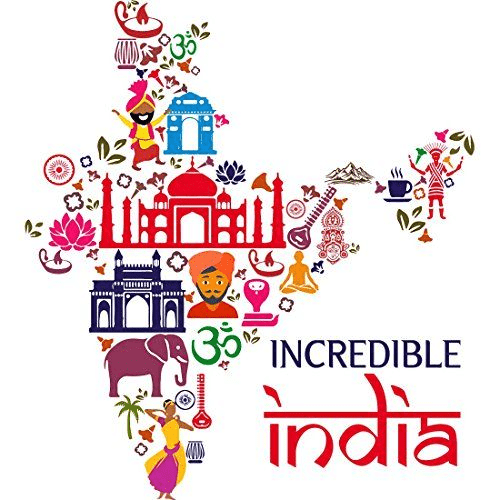
- Indian Freedom struggle is a good example of Indian Unity in Diversity. At this time Indians from different groups joined hands against ‘Phirangi Sahebs’ to liberate the country.
- British thought to divide the Indians, because they were so different and then continued to rule them. However, the people showed how they could be different yet united in their battle against the British.
- There is also a song sung after the Jallianwala Bagh Massacre in Amritsar composed in memory of the brave people who were killed by a British General.
- Pt. Nehru in his book, ‘Discovery of India’, wrote that Indian unity is not something imposed from outside by rather it is something deeper and within its folds.
Frequently Asked Questions
Q.1. What does diversity add to our lives?
Ans: Diversity is dissimilarities in the way of our lives. It is observed in religious functions, in festivals, in language, etc. One thing that is unique about diversity is that it teaches us to live and adjust ourselves in broad society. Our Constitution believes in respect to all human beings in a similar way. Diversity makes us tolerant and just. We know how to behave with other people belonging to different caste, creed, or culture.
Q.2. How do history and geography tie the cultural life of a region? Explain giving examples of Kerala and Ladakh.
Ans: Kerala and Ladakh are quite different in terms of their geographical features. It was the geography of Kerala which made the possibility of spice cultivation there. So far Ladakh is concerned, its special location flourished the business of wool collection among the Ladakhi people. The people of Ladakh carefully collect the wool of the sheep and sell it to the traders from Kashmir. The history of both regions had been affected by similar cultural influences. Both the regions were influenced by Chinese and Arab traders. Thus, we can stay history and geography are often tied to the cultural life of a region.
Q.3. What is the Diversity of India?
Ans: Indian is an amalgamation of 28 states and 8 union territories which is augmented by the islands like Andaman and Nicobar Islands and the Lakshadweep. India is one of the vast countries with extraordinary characteristics and diversity in terms of its geographical, linguistic, religious, and social-cultural features, etc.
FAQs on Class 6 Civics Chapter 1 Notes - Diversity
| 1. What is the definition of diversity? |  |
| 2. How is diversity reflected in India? |  |
| 3. What does the phrase "Unity in Diversity" mean in the context of India? |  |
| 4. Why is understanding diversity important in society? |  |
| 5. What are some challenges related to diversity in India? |  |
















